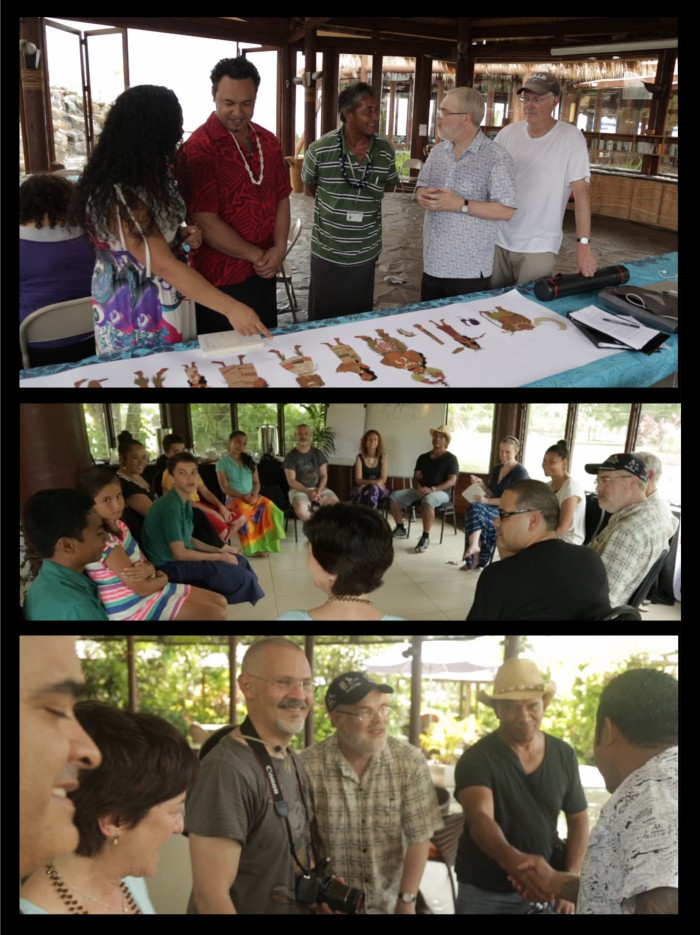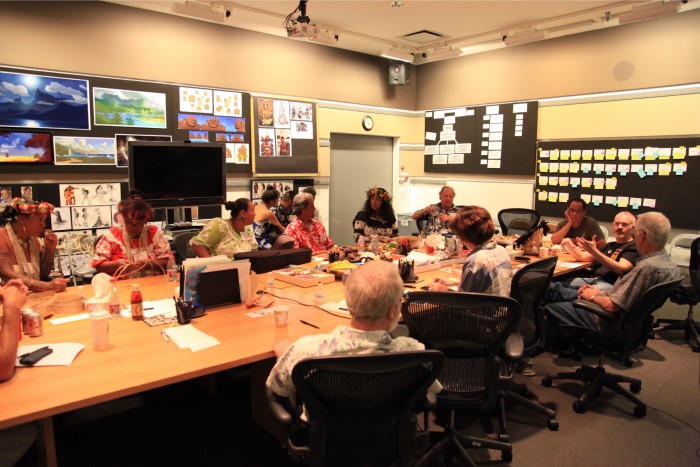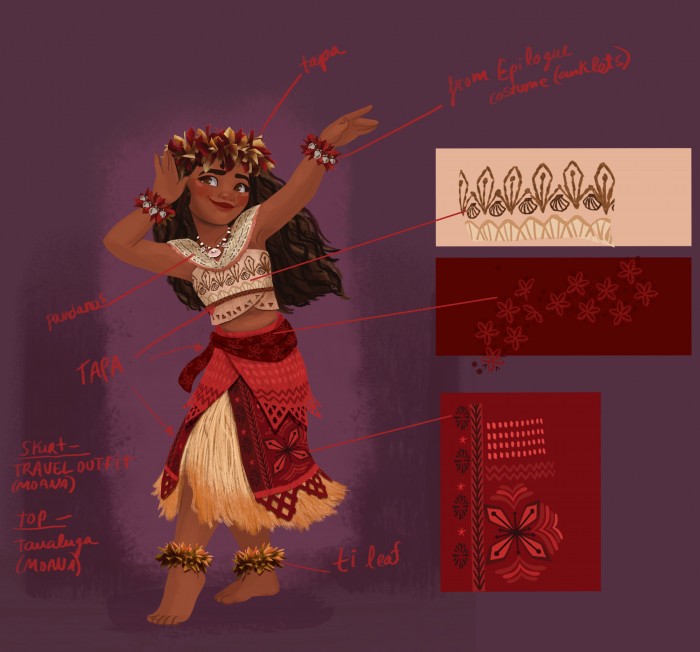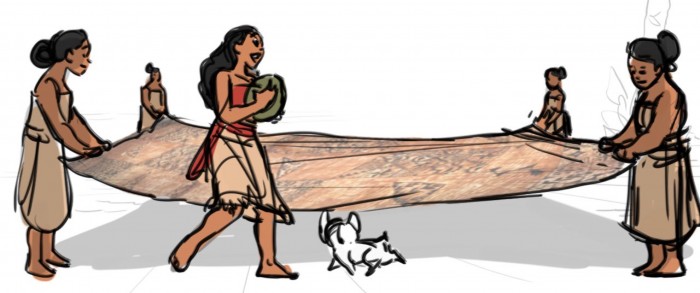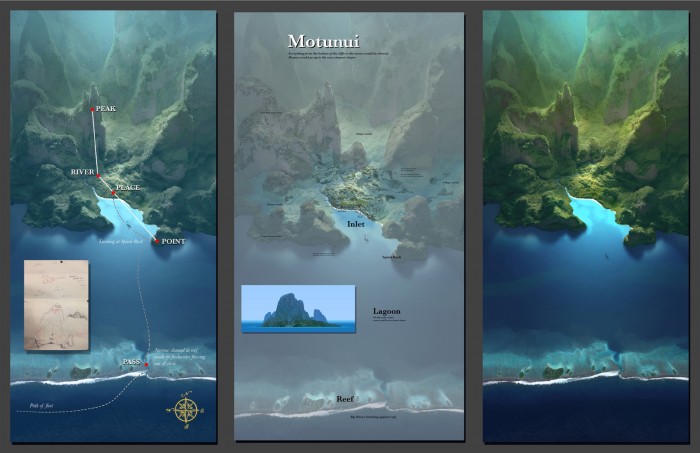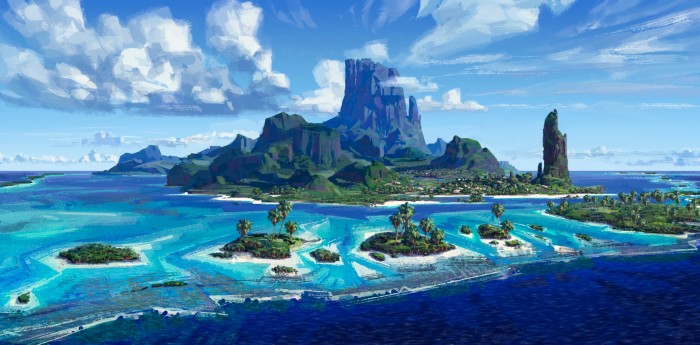How Disney Formed The Oceanic Story Trust To Make 'Moana' More Authentic
On July 27th, I visited Walt Disney Animation Studios Tujunga Campus to get a sneak preview of the company's next film Moana. While the movie won't hit theaters until Thanksgiving weekend this year, the studio was in the closing stretches of the movie with only a couple more weeks of animation on the schedule. This week we'll be bringing you a bunch of coverage from my visit. Today we take a look at how Disney formed the "Oceanic Story Trust" to ensure that the film would respect the people and heritage of the South Pacific.
Research Trips
This story is set in ancient Polynesia, so Disney wanted to honor the people and culture of the South Pacific islands. Directors Ron Clements and John Musker took research trips to many islands in the South Pacific, and those visits changed the vision of what the film would become. They had gone in expecting to be wowed by the beauty of the islands, but it was the people they met during these trips that inspired the film significantly. An elder told them, "Know your mountain," which means, in order to know where you're going, you have to know where you've been. A canoe instructor explained to them that you have to listen carefully to the ocean and that the ocean doesn't divide the lands, it connects them.
Disney Animation conducted three significant research trips to the South Pacific Islands. One in October 2011 to Juri, Samoa, Tahiti, and Moorea. Then there was another in March 2014 to New Zealand, Samoa, Moorea, Bora Bora and Tetiaroa. This trip was more geared towards music and costumes and took place during the Pacific Island music festival. The third research trip took place in November 2014 to Bora Bora, Tetiaroa, Moorea, and Tahiti, focusing more on the visual development of the film.
Many details came from the inspiration of the research trips. On one of their hikes into a tropical jungle, the guide pointed out some of the nuts on the ground and told them to take them back with them as they used to be used as a light source. They included the detail of candlenuts in the movie.
All the colors in the film were based on photographs they took while on their research trips. They enhanced the saturation a little to caricature the colors because photos often didn't capture the water or their memory of how beautiful it looked.
The Oceanic Story Trust
It was through these visits that they began to form "the Oceanic Story Trust," which is kind of like the Pixar brain trust for this story, but instead in charge of ensuring the people of the region were depicted authentically. Polynesia is a region that has been misrepresented in the media, and they wanted to make sure that doesn't happen with this movie. They would not only fact check any story beat, but almost every aspect of the film from the music to costumes.
The Oceanic Story Trust consists of people from many walks of life. They're academics, archeologists, anthropologists, linguists, historians. But also tattoo masters and navigators and fishermen and elders, artists. They shared their knowledge and stories with the production and were available to the filmmakers and crew for questions throughout the process.
Every name in the movie either comes from or was approved by the Oceanic Story Trust. Moana's name means "of the sea." Every draft of the script, every little change, was sent to the Oceanic Story Trust to vet. Because the South Pacific is one big atmosphere, there are shared words that sometimes have negative connotations in different regions. Screenwriter Jared Bush says that "sometimes they'd say like 'oh, you can't do that.'"
Or they'd say like, I can see you guys trying to be safe. You don't have to be that safe with this. So it was definitely this great conversation. There was a few times where we were recording Dwayne Johnson in Atlanta and there was one bit of dialogue that wasn't working correctly, but it had to be vetted, so I was literally emailing with Paul who was in Fiji, Aaron and Jordan, two other writers that were in Hawaii, and we're all sort of doing this and going back and forth and finally we all agreed on one thing and then I walked in and Dwayne recorded that line five seconds later. But we're having the conversation all around the world in that one moment, which is pretty fantastic.
They were very particular about all details of the film. For instance, even Moana's clothes were made from materials and using designs that would have been made 2,000 years ago. Red colors have a significance to the Pacific islanders, meaning royalty, so they reserved those colors for a ceremonial costume.
They had to redo hundreds of crowd costumes in a sequence because one of the trust experts informed them that you would never go on a boat in that particular kind of costume, even though the wardrobe is accurate to the time period and area.
There were no surviving ships from 2,000 years ago so they based the vehicles on the oldest boats preserved from the region only few hundred years ago. They also tried to imagine how the boats would have functioned based on marine technology from that time period. They based the style on Fijian-style boats because research showed them that the ships that came to the island would have probably been from elsewhere.
A bunch of the animation crew working on the movie also have South Pacific roots. Story artist David Derrick came to the studio to work on this project because he was of Samoan ancestry and it was very personal to him.
The first thing I did is I went out to the gravesite of my first Samoan ancestor who came from America and I did a rubbing of her gravesite. And I had that above my desk every single day that I was working on it. As a reminder why I'm making this, why I'm working so hard. It's really to celebrate and honor a powerful culture. They have the largest atmosphere of any culture prior to Western expansion. People don't realize that. But they were able to navigate from Easter Island to New Zealand to Hawaii to Samoa all without instruments. Just with the art of way finding. They have an incredible culture that I am so proud that we are honoring.
Derrick was able to sneak in his family's tapa into the movie in the background of a scene — Moana walks past women holding the tapestry while singing a song while walking through the village.
The Islands of Moana
Motu-Nui, Moana's home island, is a fictional creation based on their research trips, emulating where they feel a village from 2,000 years ago may have been based.
They initially created the island in clay, which they photographed and overlayed with colors in Photoshop. They later 3D scanned the model and filled out in the computer.
In an attempt to imagine what the area looked like 2,000 years ago, they tried to base the looks of the islands based on less traveled islands like Tetiaroa, rather than the more touristy areas which have had the plants and trees pollinated from other places over the years
Plant life is very different depending on the elevation on an island, and they studied that in order to replicate it in the film.
Navigators taught them that clouds are big indicators of what's below them. For example, if you're looking for small islands you'd want to head towards turquoise clouds.
Check back here tomorrow as we continue to take a look at the creation of Moana.

